
Rights Reserved - Free Access.
This digital object is protected by copyright and/or related rights. This digital object is accessible without charge, but its use is subject to written permission.
Unless expressly stated otherwise in the licensing conditions, you are free to make any of the acts permitted by your national copyright and related rights act, including browsing, printing and making a copy for your own personal purposes.
All other acts of reproduction and communication to the public are subject to the licensing conditions attached to the digital object.
ARMY BOOTS OF THE WORLD. REVIEWS
Important notice: we do not sell any boots! The prices are given for information purposes only!
Switzerland ![]()
The Swiss army of the 20th century has been widely used the gaiters, especially with low boots. Before the Second World War the puttees had been widely used as well. The early gaiters were made of thick leather, with side adjustment buckles and a leather adjustable stirrup type strap that runs under the boot to help secure them on. Further on the Swiss began using the zip-up gaiters of laminated wool fabric. The gaiters used to be worn over the footwear, and usually one size fits all. The military gaiters are designed to withstand even the most harsh conditions of use and stand up to tear-and-wear.

Flexible, strong and durable material (especially the leather) is to protect the soldier's feet from damage, punctures and cuts as well as from water splashes, small pebbles, stones, dirt clods, the branches of bushes, ground cover and other natural pests. The gaiters are designed to fix the ankle and cover the boot's lacing, protecting it from unleashing and scrambling. This is very important, especially for walking in the mountains and on the glaciers. Leggings are also designed to protect the feet from bad weather - the air space between the legs and fabric or leather allows to keep the feet dry and thermally comfortable.
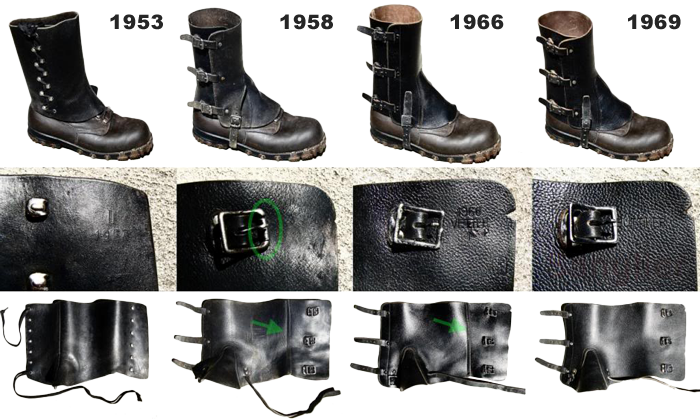
In the Swiss army the leather gaiters were used with low (ankle) boots until the 1970s. In different years these leggings featured various designs, and were fixed to the leg with lacing with three side adjustment leather straps with buckles. The gaiters are sometimes confused with leggings, but the difference is as follows: the gaiters extend to the high ankle only and are worn with full leg trousers, while military leggings extended to the bottom of the knee and are buttoned to the bottom button on the knee-breeches, being often fixed on the leg with lacing. Another elongated strap on the buckle is used to secure the gaiters to the boot's out-sole. The size of the leather gaiters is approximately 35cm x 22cm.
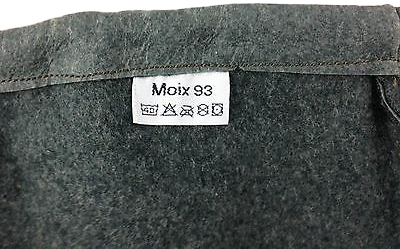
Currently the leather is practically not used as the material for gaiters, except parade dress uniform or cavalry equipment. After the beginning of the massive use of Gore-Tex-type membrane materials, the benefits of leather were outweighed by their disadvantages, because leather is exposed to natural degradation, shrinkage, and the damaging effects of moisture. Such organic material as leather is not waterproof, and leather gaiters are so tough and dimensional - they can not be compactly folded and put into one's pocket or at the bottom of a backpack, but this is not a problem for modern synthetic gaiters.
The gaiters made of wool-comprising cloth material feature zipper fasteners on the outer side of the legs. These zippers are often labeled "riri", as well as the original Swiss TAZ 90 army jackets. This specially treated (laminated) wool material is water repellent, it is not as tough as leather, but more warm and windproof. Above and below, these gaiters feature come with elastic bands (two at the bottom) and the ties on the bottom and top to regulate the tightness of the leg coverage. On the inner side, opposite to the malleolus bones, the additional protective patch of vinyl are sewn. The same material adjustable elastic strap with buckle runs under the boot to help secure the gaiters firmly on the boots.
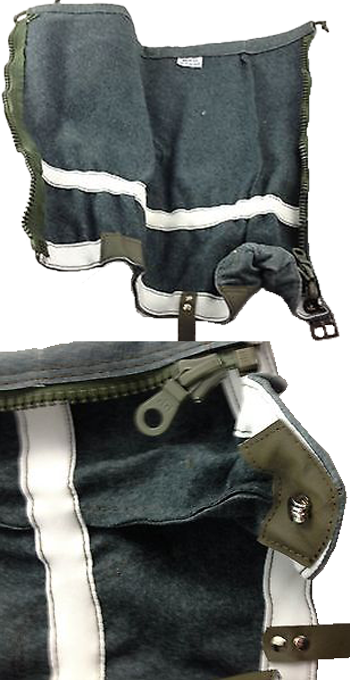
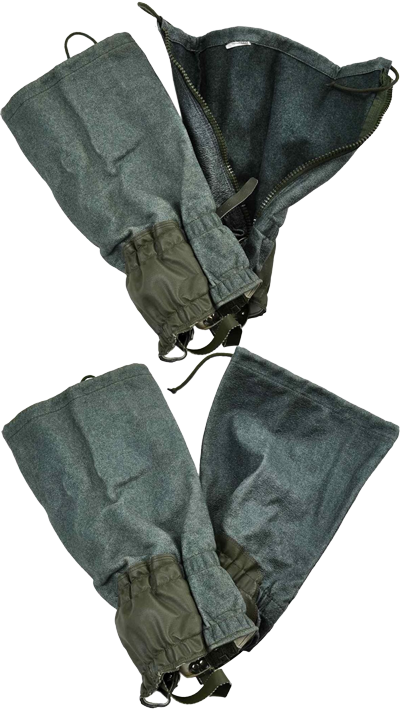
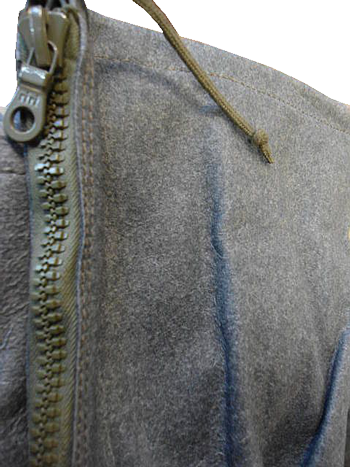
On the inside front side of the gaiters, the hooks are sewn to fix to the lace-up boots. The height of the gaiters is about 15 inches (38 cm).
KS90 (Kampfstiefel 90) are the military boots of Switzerland (model of the year 1990). These boots has become a part of a new military equipment set, which have been used by the Swiss armed forces since 1990 along with the new camouflage TAZ90 (Tarnanzug Modell 1990).
Swiss military boots - Kampfstiefel 90 (KS90)
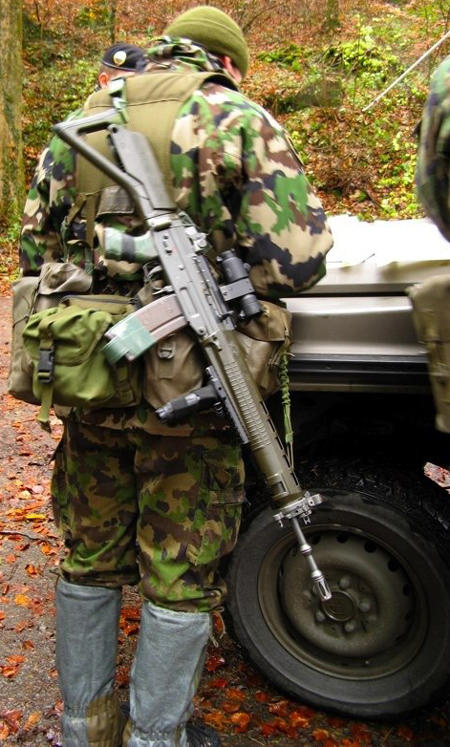

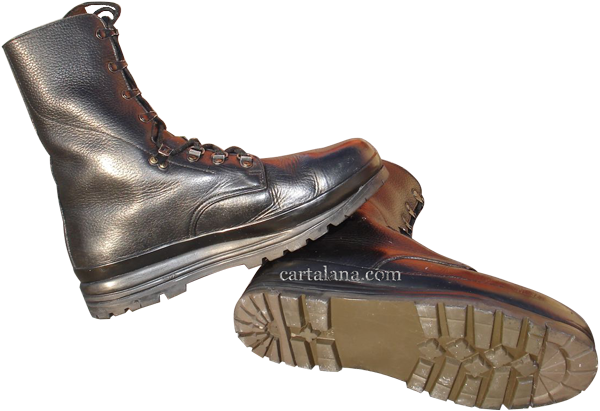
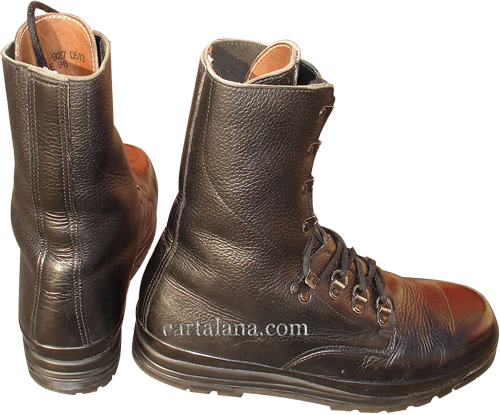
The material of the boot's upper is thick and durable 100% natural high-quality grain leather. The inside layer is light-yellow soft and durable "glove"-type leather, which is aimed at protection of the feet areas, which are most exposed to friction and mechanical injuries. For example, the malleolus bones of the legs are covered with additional layers of thin leather and foam wadding. The multilayer construction of the leather upper allows one's feet feel warm and dry. The height of these boots are about 21 cm and the weigh is about 1750 grams for a pair of boots. Between the leather upper and the out-sole a protective rubber sealing tape goes along the welt, as it uses to be in the modern mountain boots.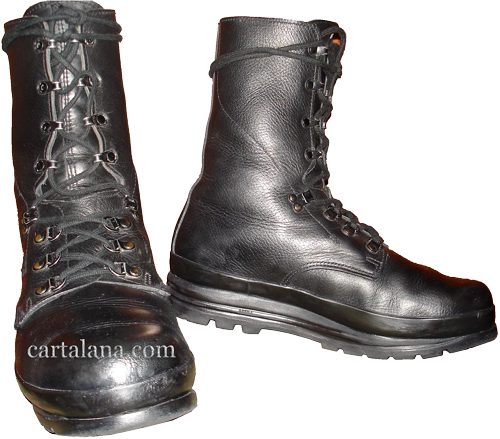
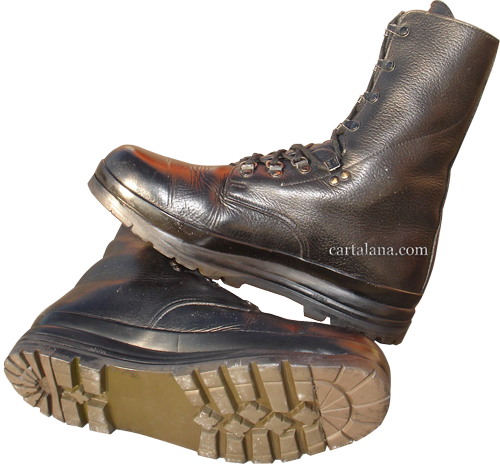
The dual-layer boot's tongue is marked and stitched high to the sixth pair of eyelets (counting from the bottom of the lacing), allowing one to walk through shallow and middle-depth puddles without water ingress inside the boots. To protect the upper part of the foot under the laces, the design of the Swiss military boots features additional folded "shutters" of leather.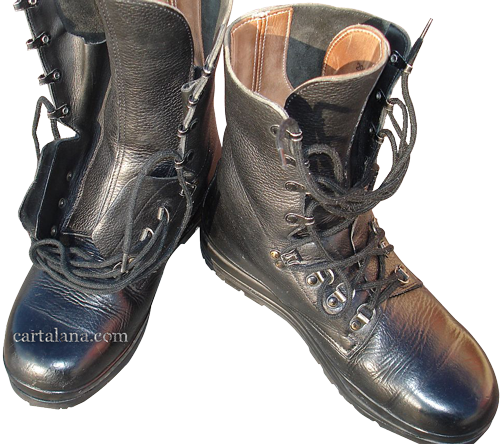

The lacing accessories (speed-lacing system eyelets) are labeled with the manufacturer's name - "STOCKO". This brand belongs to the "YKK Stocko Fasteners GmbH" company of Wuppertal, Germany, a multi-year contract provider of the Bundeswehr and some other NATO armies. The lacing system, counting upwards from the bottom, consists of the three pairs of "D"-shaped rings, a pair of hook clamps for keeping the laces firm and four pairs of speed-lacing eyelets. The upper of the Swiss KS90 boots look very similar to the top of the old German Bundeswehr boots (the so-called "Alte Art Kampfstiefel"), which were used in the 1970-80s.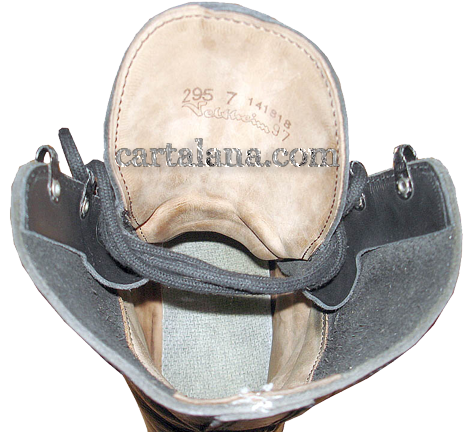
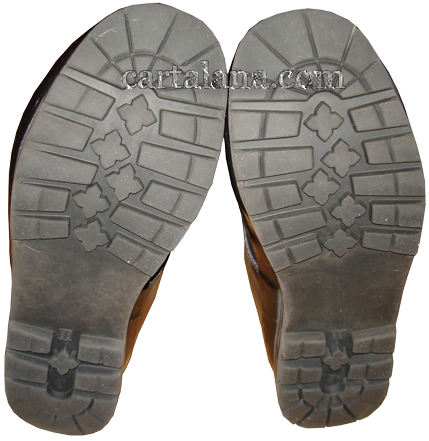
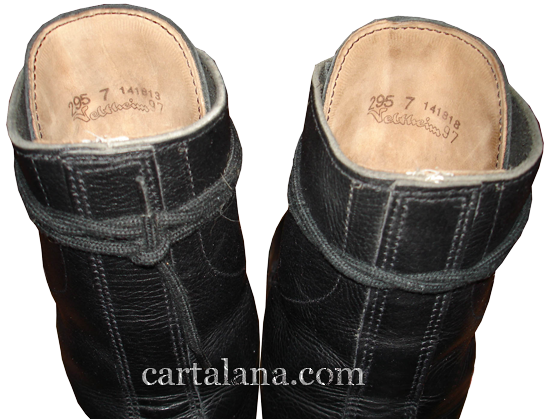
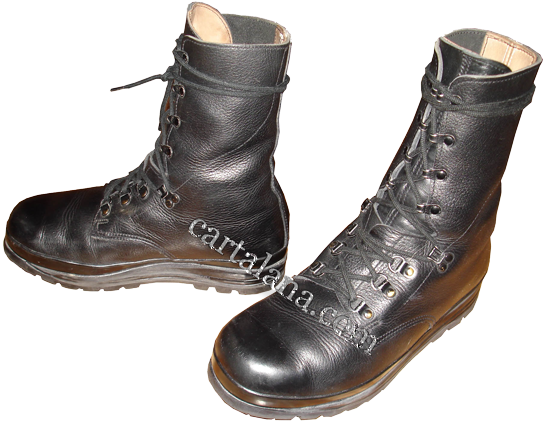
The KS90 boots, made by different manufacturers feature various lacing system eyelets, made either of steel and bronze, black painted or unpainted (shiny stainless steel).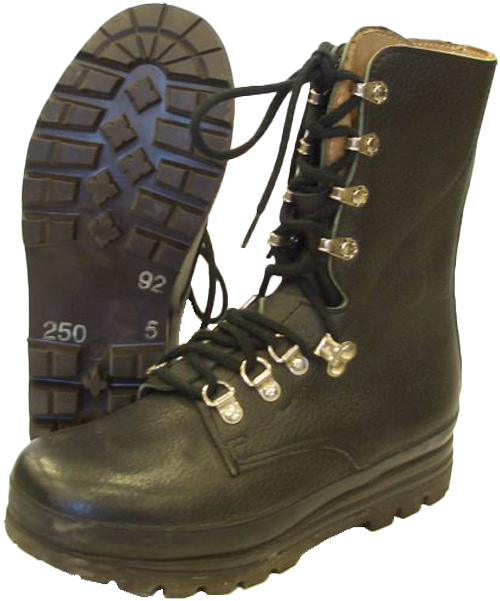

The information about the Swiss military boots manufacturers are stamped on the boot's tongue, in two lines. The top line indicates the boot's size in millimeters (e.g. 295 - according to the "Mondopoint" system),, width (e.g. 7), and Swiss military contract number. The chart size of European and Swiss boot sizes is listed in the table below:
| Groößentabelle Stiefel / Schuhe | |||||||||||||||
| Schweizer Armee Größe | 250 | 255 | 260 | 265 | 270 | 275 | 280 | 285 | 290 | 295 | 300 | 305 | 310 | 315 | 320 |
| EU Größe | 38 | 39 | 40 | 40 | 41 | 42 | 42,5 | 43 | 44 | 45 | 46 | 46,5 | 47 | 48 | 49 |

The bottom line indicates the manufacturer, among the most common names are: "MINERVA" and "BALLY", more rare are such names as "LOWA", "RECK", "DEON", "ELGG", "VELTHEIM" ( "Aeschlimann"), "RAICHLE" ( "Mammut") ...
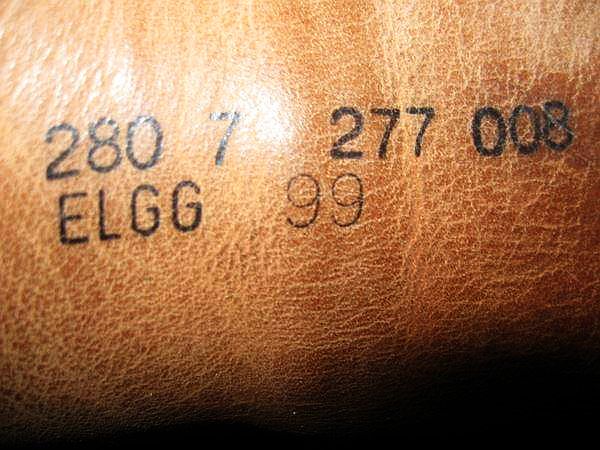
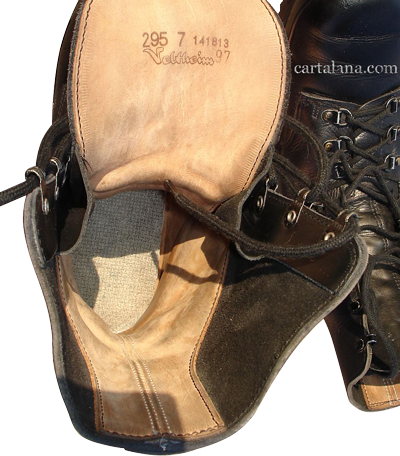
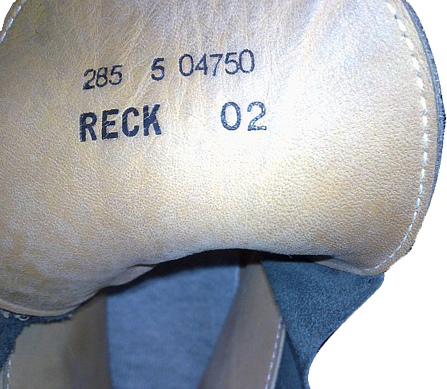
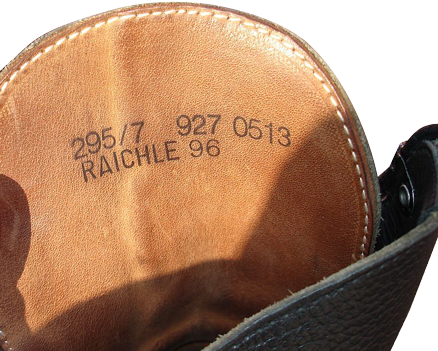
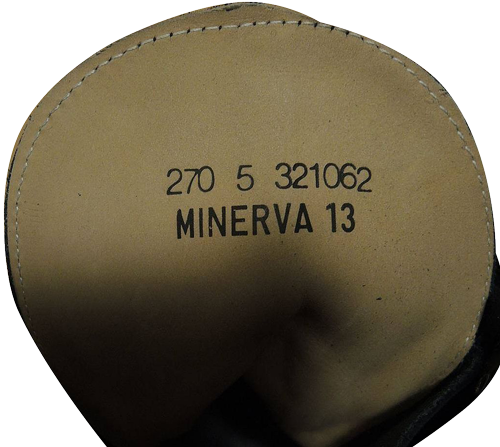
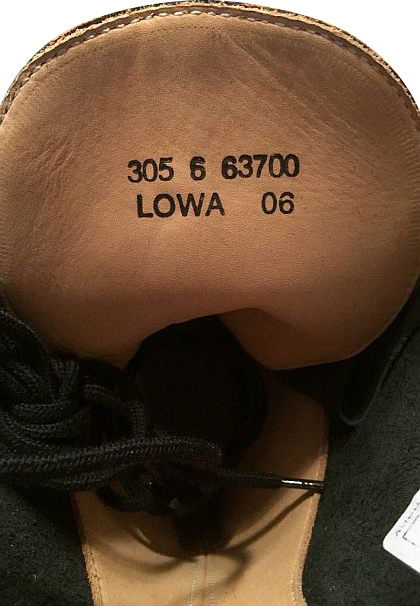
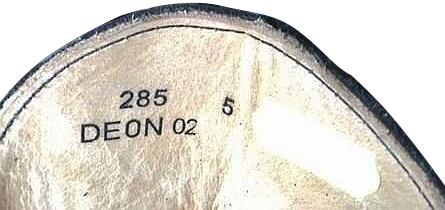

The soles of Swiss army boots are composite in construction and consist of polyurethane and nitrile rubber, the marking on the out-sole indicates the manufacturer ( "DAG", "gg", "Maloy", "Astra" etc...). The tread pattern is a Swiss licensed modification of conventional "Vibram" soles. The edge of the boot's welt is covered with protective rubber strip.
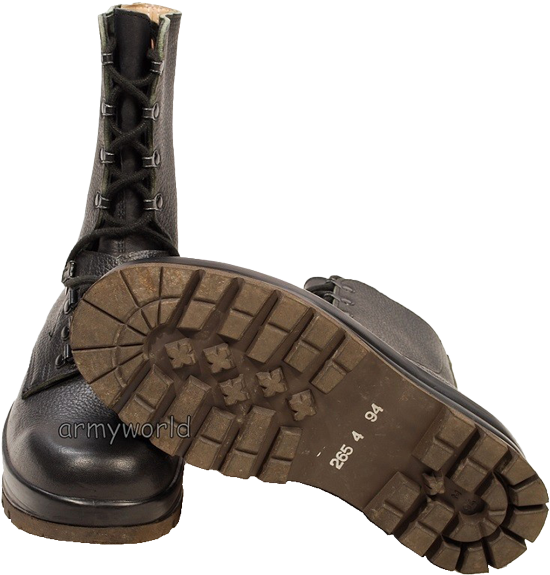
The tread pattern provides good adhesion to most surfaces and the lugs configuration elements is slightly different for different manufacturers (in particular, on the edges of the heels and in the shape of the squared "crosses" in the center of the out-sole). The size, width, and the year of manufacture use to be indicated with white paint on the bottom of the out-sole, in one or two lines, or omitted, because this information is indicated on the tongue as well.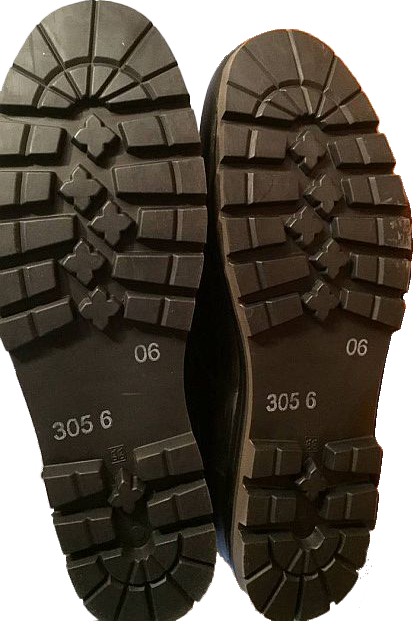
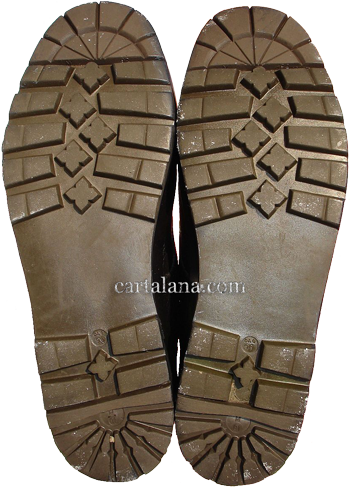
The Swiss KS90 boots are quite comfortable and soft, but they also have an inherent weakness, similar to, for example, Bundeswehr boots of Model 2000 and, sometimes, Models 2005/07. When the boots are improperly stored, overheated or overdried, small fractures can appear between the out-soles and protective sealing rubber tape the goes along the welt. The moisture easily penetrates into these micro-cracks, starting a hydrolysis chemical reaction with the polyurethane foam-shock-absorbing layer, whereby the sole crumbles and ravels slowly but inevitably.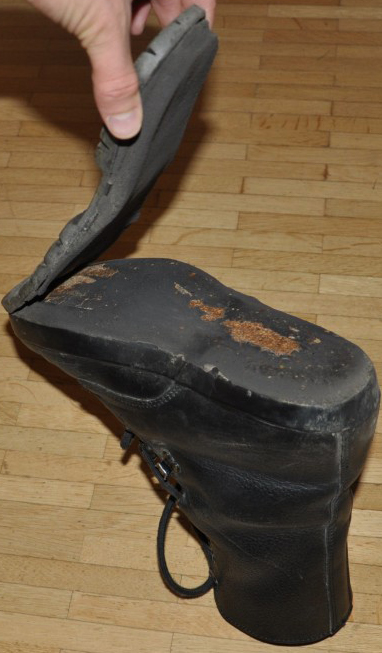
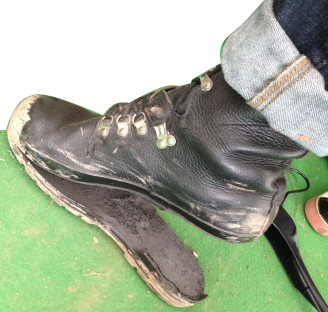

From my personal experience of checking out the used Swiss military boots, most boots that showed degradation were produced by such manufacturers as "BALLY" and "MINERVA"- i.e. the most popular manufacturers.
At the same time it should be noted that Swiss KS90 boots, manufactured recently show the slightly changed out-soles. Instead of broad protective rubber strip and glued soles they feature more advanced soles (they seem to be Direct Molded soles), covering the lower part of the boot's shanks. The photos below (051) depicts the boots, produced by "MINERVA"company in the year 2012.

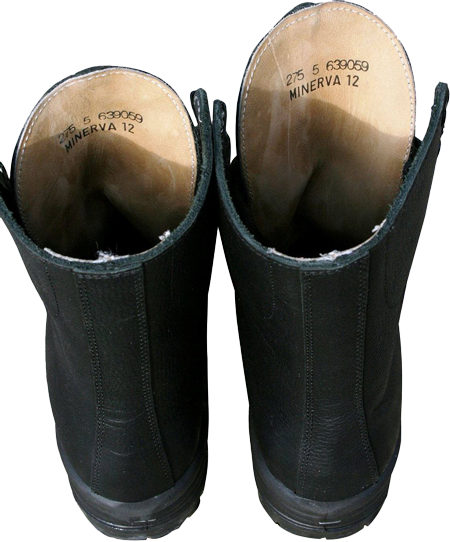
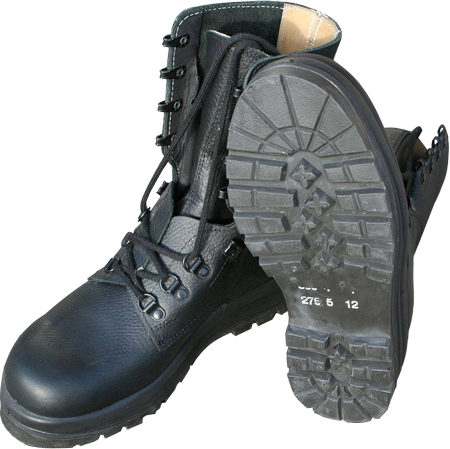
Besides the features of the out-soles and the rubber side-bands (the joint of the boots upper and sole), all the other constructive elements remain unchanged - the out-sole tread pattern, lacing system, etc. Perhaps the most characteristic feature of these boots is the DMS attachment method.
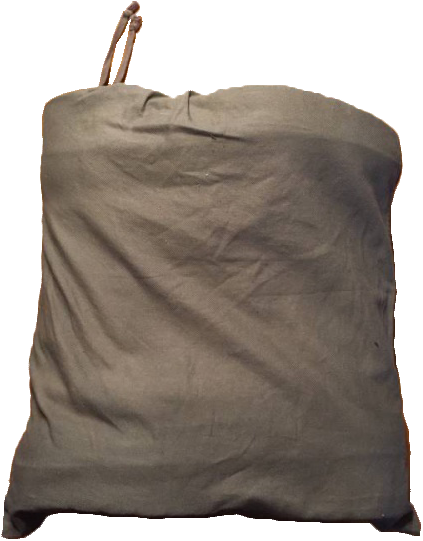
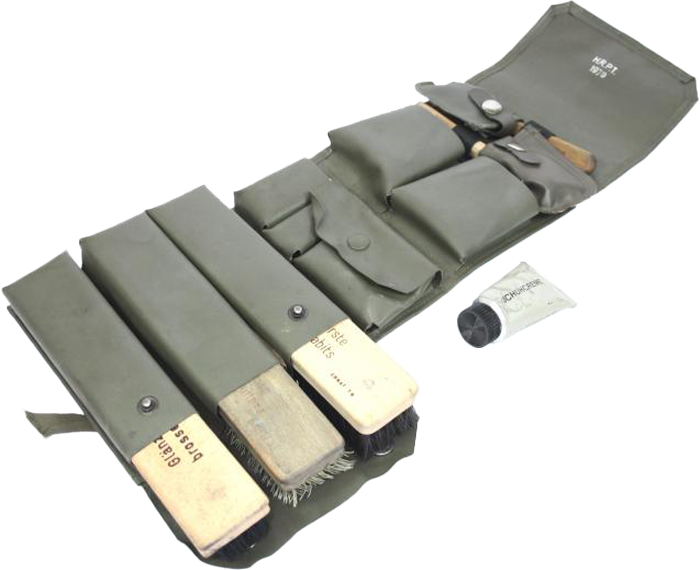
KS90 boots are to be stored and carried in a backpack inside a canvas bag with lace on top.
Before the introduction of Swiss army equipment set model M90, the footwear care set case was made of gray vinyl material, with rivet-fastened pockets for brushes, creams etc.

When the Swiss TAZ 90 (TarnAnZug 90, or TASS 90 in French) camouflage was introduced, it got the name "Swiss Woodland", or just "Swiss forest camouflage" in the other countries. The Swiss army introduced the footwear care set in TAZ90 camouflage cases, very similar to the previous gray vinyl ones, but made of laminated vinyl-lined waterproof fabric. It features the same pockets with rivets, and the folding edges are fastened with wide "Velcro" ribbon. A special pocket for the owner's name tab is provided on the upper outer side.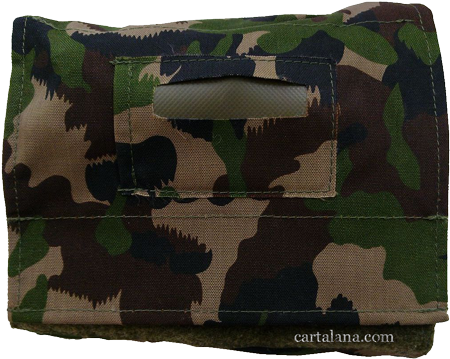
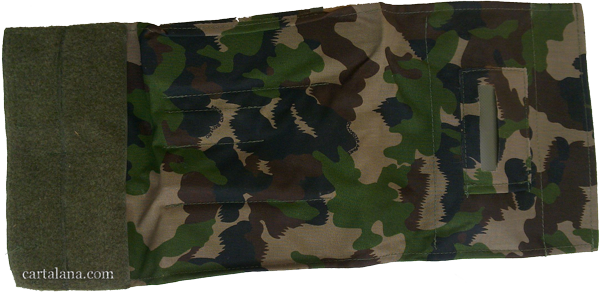
This set consists of brushes for cleaning clothes and boots, two black metallic tubes with boot polish, with the inscriptions: "SCHUHCREME" - "CREME POUR CHAUSSURES" (03 or 09 sara lee), small brush for applying the cream (in a special carrying case), a wooden pallet and a sewing set consisting of needles, multi-colors threads binding, Swedish pins and other small necessary things.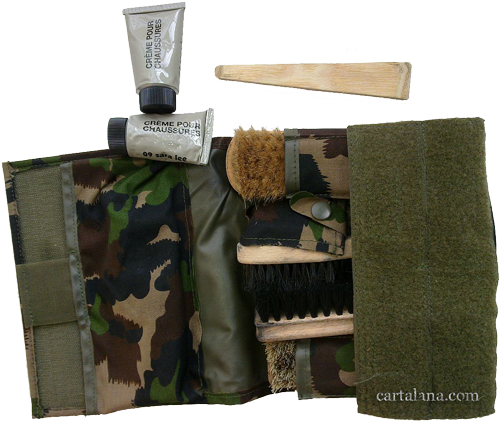
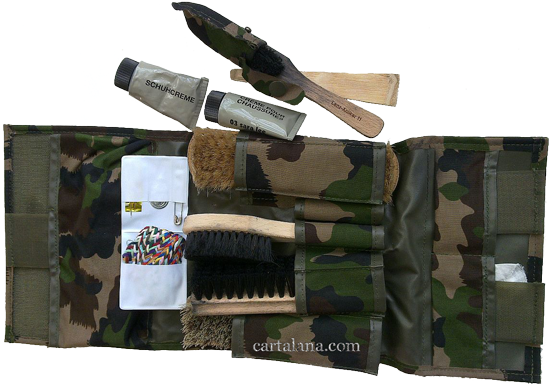
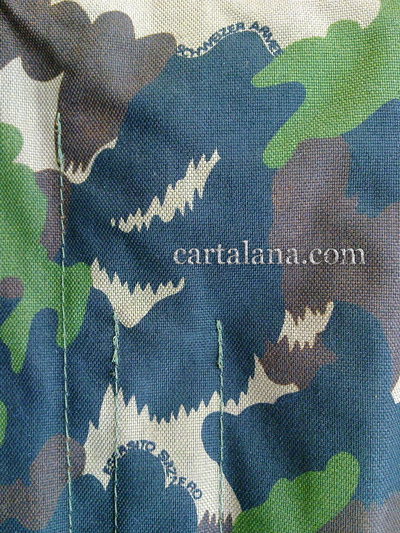
If to look closely at this camouflage set, one can see small inscriptions pointing, that this boot care set belongs to the ARMED FORCES OF SWITZERLAND: "SCHWEIZER ARMEE" and "ESERSITO SVIZZERO" ...
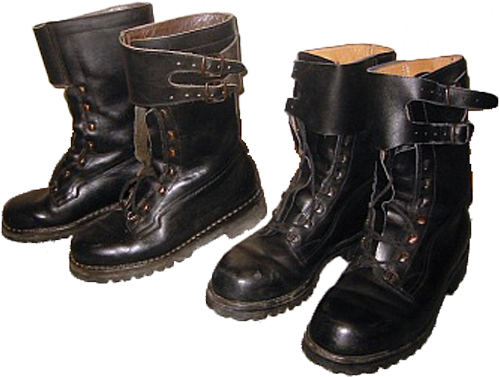
"Hybrid" footwear of the Swiss Army: buckles and cuffs and "grenadier" boots
Between the ankle "mountain" boots and KS90 boots the Swiss armed forces have been using an intermediate version of the military boots, featuring cuffs with straps and two buckles. Externally they resembled a "hybrid" of French BMJA-65 "Rangers", Italian boots with cuffs and old Swiss ankle boots. The lacing system consisted of hooks in the upper part of the lacing and "D"-shaped half-ring in the lower part. Under the lacing one can see the traditional Swiss folding "shutters" of overlapping leather. The boot's top is made of smooth leather, the boots inside are lined with soft light-colored "glove"-type leather.

The out-sole is stitched and glued, the tread pattern is the classic "Vibram". By chance the author of this review managed to take a good look at two pairs of such boots, and the out-soles were marked with the following manufacturer names "SKYWALK" and "DAVOS".

The second, quite a rare type of Swiss military boots is the so-called "grenadier" boots ("Grenadierstiefel"). The photo below show such boots, manufactured by "BALMER SCHUH".
These Swiss boots are in fact a "hybrid" of boots from neighboring Alpine countries - Austria and Italy. The lower part of the boots and the lacing system, consisting of six pairs of simple round eyelets, the single cut upper (without separation of ankle and top parts of the boot) as well as the use of thin leather lining remind clearly the Italian ("Scarpe militari:" Anfibi "da para).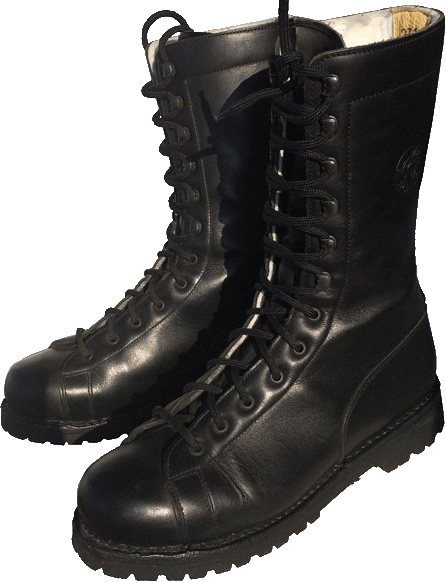
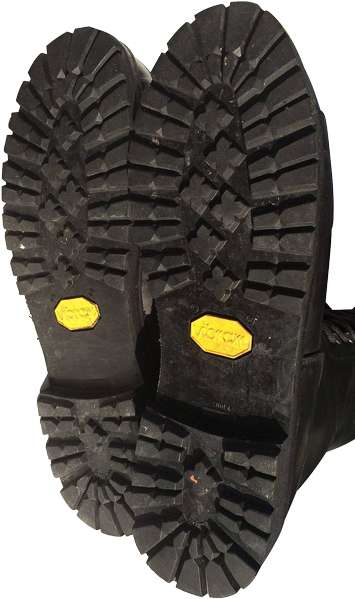
The other features of the "grenadier" boots clearly resemble the Austrian light boots (Leichtschuh), especially the top of the lacing (but six pairs of hooks, not four as on the Austrian boots), additional leather pads on the heels as well as a typical Austrian out-soles with "Vibram" tread pattern.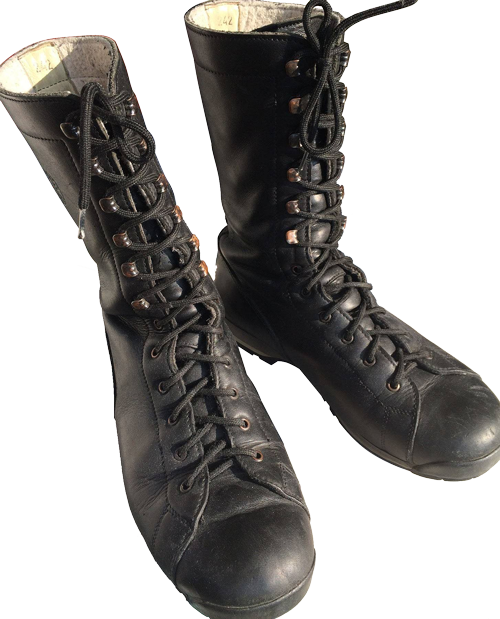

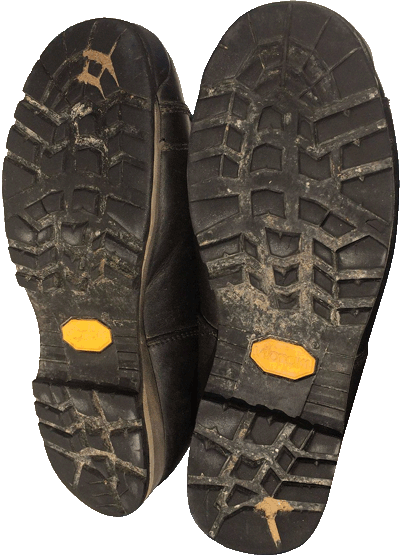
The late "grenadier" boots by "Balmer" feature more advanced "Vibram® Fourà" out-soles. Usually black "Vibram" label on the sole is used for military boots, while bright yellow label is for commercial products. So the Swiss "grenadier" boots shown on the photos below can be identified as clearly commercial. At the same time in the web one can find the photos of the Swiss soldiers in just the same boots, though quite seldom.
One can assume that the so-called "Grenadier Stiefel" ("grenadier" boots) are not the statutory military boots of the Swiss army, but, being purchased privately, they are allowed for use during the military service, as these boots meet the appropriate quality requirements. In favor of this hypothesis is the fact that, according to Swiss law, if a recruit (who was determined fit for military service and wants to serve) has any problems with his feet, he is allowed to choose any of the from the approved list instead of the statutory KS90 boots. Of course, this is possible by the written consent of an orthopedic doctor.
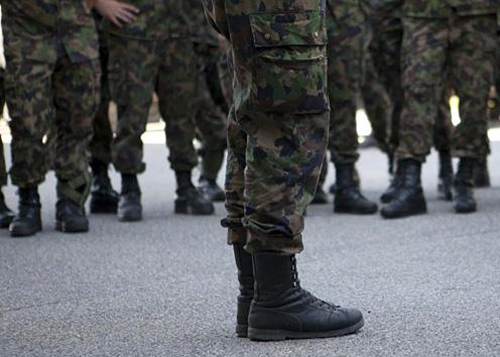
Considering the matters concerning the Swiss military footwear, the weight values of the boots and gaiters are also worth mentioning. According to the Swiss military Regulation "Reglement 51.009 d", section "Bekleidung und Packungen" ("Clothes and accessories for luggage"), Appendix 2, Weight Table (average) ("Anhang 2", "Gewichtstabelle (Mittelwerte)", the weight of a pair of items is as follows:
- Combat boots, model of the year 1990 (Kampfstiefel KS90) = 2,270 kg;
- Mountain boots, consisting of 2 components (Schalenschuh) = 2,610 kg;
- Boot inserts (inner boots) to the mountain 2-component plastic boots (Innenschuh zu Schalenschuh) = 0,850 kg;
- Swiss Air Force ground personnel boots, model of the year 2005 (Stiefel Fliegerbodenpersonal 05) = 1,750 kg;
- Work boots, model of the year 2002 (Arbeitsschuhe 02) = 1,110 kg;
- Gaiters, model of the year 1990 (Gamaschen 90) = 0,250 kg.
Also the "Reglement 51.009 d" provides instructions for boot care, drying and cleaning. Paragraph 54 (Kampfstiefel 90 und Kampfstiefel schwer 14) recommends to:
- Remove the insoles of the boots to dry on a daily basis;
- Use padding of crumpled paper to eliminate the excessive moisture, and replace the wet padding as necessary;
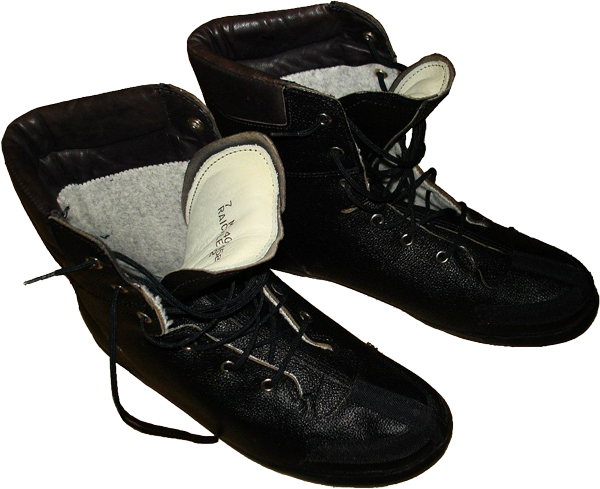
- Dry the boot in a place with good air circulation, not close to the sources of heat, if possible, one can hang the boots to dry;
- Clean the boots with brush, or wash them, depending on the degree of soiling;
- Make the boots shiny only after drying of boot cream, which has been applied beforehand, or use the boot spray only which contains no solvents in their composition.
The next clause № 55 (named "Schalenschuh") recommends to:
- Remove the inner boots (liners) from the mountain 2-component plastic boots and dry them daily, and the insoles are to be taken out to dry fully;

- Dry the external plastic boot's housing and the inserts in places with good air circulation and keep them away from strong sources of heat;
- If the plastic part of the composite boot is slightly dirty or just dusty, it can be just wiped out, but if the soiling is strong, washing and drying are recommended;
- At least once a month the leather inserts (internal boots) are to be treated with shoe polish, then dried and shine-polished.
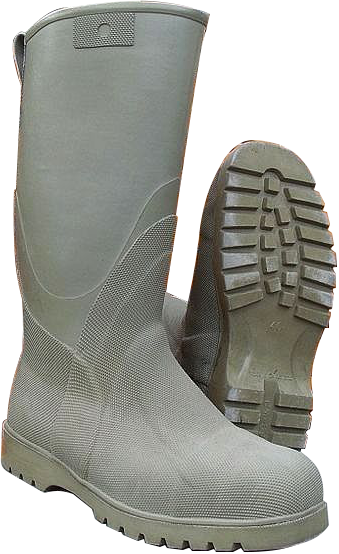
Rubber boots are also used in the Swiss army. These rubber high boots feature steel toe cap and the out-soles with the same tread pattern, as on the older-fashioned mountain ankle boots - the Swiss version of the Vibram, with small square-shaped lugs in the center of the out-sole elements and strips, radially placed perpendicular to the sole edge. Strap loop is provided at the top rear side of each Swiss green rubber boot for the ease of pulling-on and hang-drying.
Exclusively for cartalana.com
We have much more interesting information on this site.
Click MENU to check it out!
∎ cartalana.com© 2009-2025 ∎ mailto: cartalana@cartalana.com